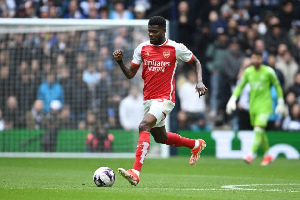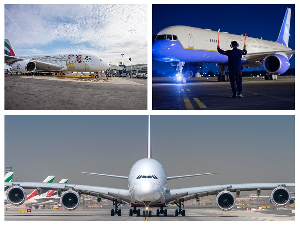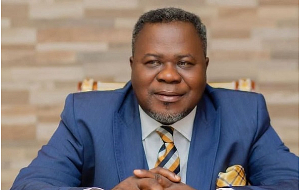- Home - News
- TWI News | TV
- Polls
- Year In Review
- News Archive
- Crime & Punishment
- Politics
- Regional
- Editorial
- Health
- Ghanaians Abroad
- Tabloid
- Africa
- Religion
- Election 2020
- Coronavirus
- News Videos | TV
- Photo Archives
- News Headlines
- Press Release
General News of Wednesday, 1 September 1999
Source: Reuters
Gold sales would harm poor countries - IMF documents
08:17 p.m Aug 31, 1999 Eastern
By Mark Egan
WASHINGTON, Aug 31 (Reuters) - The proposed International Monetary Fund sale of part of its gold reserves could cost 15 poor countries almost half a billion dollars in lost export earnings, internal IMF documents revealed on Tuesday.
The documents, obtained by Reuters, projected open-market gold sales could reduce gold prices in the short term and cut the export earnings of 15 countries targeted under the Heavily Indebted Poor Countries (HIPC) debt relief initiative by about $440 million over five years.
But the papers said those 15 countries would receive $7.2 billion dollars under an initial HIPC initiative and as much as $14 billion under a later proposal to enhance debt relief.
Most of the lost export earnings, according to the documents, would be in five gold-producing countries: Bolivia, Ghana, Guinea, Guyana and Mali. Those countries would lose a total of about $380 million over five years if gold prices fall by $20 an ounce -- the hypothetical amount assumed by the authors of the IMF report.
The five countries qualify for $1 billion of debt relief under the initial initiative and $3.3 billion under the enhanced scheme.
The IMF's plan to sell 10 million ounces of gold on the open market to fund debt relief for the world's poorest nations was slammed by U.S. lawmakers and gold lobbyists who said the sales would harm those countries it aimed to help.
The plan came under more criticism after gold hit a 20-year low in July when the Bank of England sold 25 tonnes of gold as part of its plan to cut its reserves by 415 tonnes.
The IMF and U.S. Treasury have been considering alternatives to open market sales in recent weeks, effectively acknowledging that open market gold sales were no longer being considered.
The IMF said in a statement its board had met again to discuss alternatives to open market gold sales.
``The IMF executive board met Monday to discuss steps to secure financing for the continuation of the Enhanced Structural Adjustment Facility (ESAF) and the Heavily Indebted Poor Countries Initiative,'' IMF spokesman William Murray said.
``The board is also exploring the technical aspects of the modalities of gold sales that would minimise or avoid any adverse impact on the market while maximizing revenue and ensuring transparency of such transactions,'' he said.
Critics have said the sale of IMF gold would further depress its price and hurt gold producers.
Under the plan the IMF would sell 10 million ounces of gold and then reinvest the proceeds to generate funds to finance its obligations under the HIPC plan to relieve the debts of 41 poor countries. Funds would also help make the IMF's ESAF low-interest loan programme become self-funding.
Many in Congress are also opposed to expanded funding for ESAF, the fund's low interest loan programme, in whatever form that funding might take because they say the programme imposes overly restrictive fiscal policies on poor countries.










